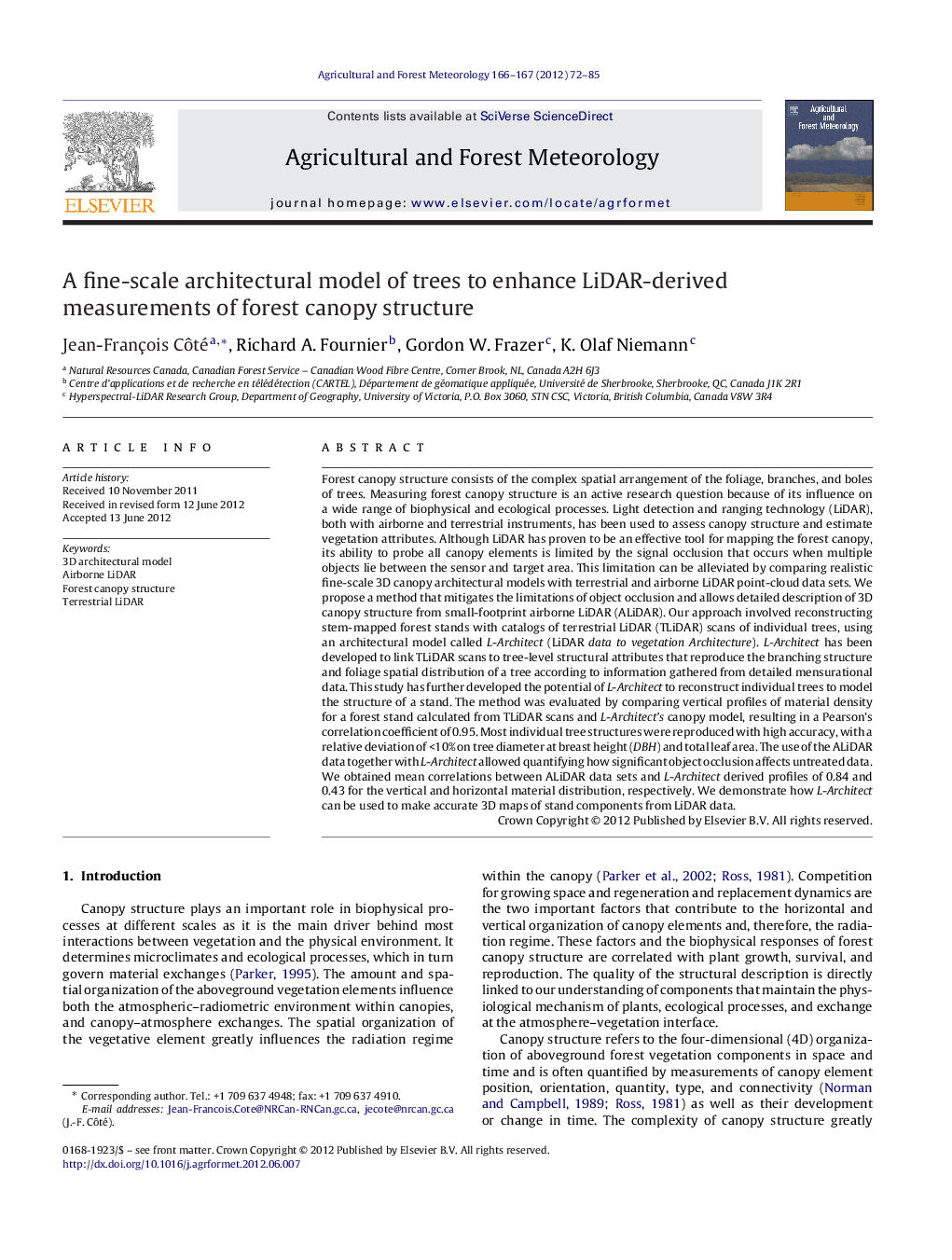| کد مقاله | کد نشریه | سال انتشار | مقاله انگلیسی | نسخه تمام متن |
|---|---|---|---|---|
| 81873 | 158355 | 2012 | 14 صفحه PDF | دانلود رایگان |

Forest canopy structure consists of the complex spatial arrangement of the foliage, branches, and boles of trees. Measuring forest canopy structure is an active research question because of its influence on a wide range of biophysical and ecological processes. Light detection and ranging technology (LiDAR), both with airborne and terrestrial instruments, has been used to assess canopy structure and estimate vegetation attributes. Although LiDAR has proven to be an effective tool for mapping the forest canopy, its ability to probe all canopy elements is limited by the signal occlusion that occurs when multiple objects lie between the sensor and target area. This limitation can be alleviated by comparing realistic fine-scale 3D canopy architectural models with terrestrial and airborne LiDAR point-cloud data sets. We propose a method that mitigates the limitations of object occlusion and allows detailed description of 3D canopy structure from small-footprint airborne LiDAR (ALiDAR). Our approach involved reconstructing stem-mapped forest stands with catalogs of terrestrial LiDAR (TLiDAR) scans of individual trees, using an architectural model called L-Architect (LiDAR data to vegetation Architecture). L-Architect has been developed to link TLiDAR scans to tree-level structural attributes that reproduce the branching structure and foliage spatial distribution of a tree according to information gathered from detailed mensurational data. This study has further developed the potential of L-Architect to reconstruct individual trees to model the structure of a stand. The method was evaluated by comparing vertical profiles of material density for a forest stand calculated from TLiDAR scans and L-Architect's canopy model, resulting in a Pearson's correlation coefficient of 0.95. Most individual tree structures were reproduced with high accuracy, with a relative deviation of <10% on tree diameter at breast height (DBH) and total leaf area. The use of the ALiDAR data together with L-Architect allowed quantifying how significant object occlusion affects untreated data. We obtained mean correlations between ALiDAR data sets and L-Architect derived profiles of 0.84 and 0.43 for the vertical and horizontal material distribution, respectively. We demonstrate how L-Architect can be used to make accurate 3D maps of stand components from LiDAR data.
► Detailed measurements of forest structure using terrestrial LiDAR.
► Fine-scale architectural model of trees to reconstruct forest stand structure.
► Assessment of the impact of object occlusion on measuring structure using LiDAR.
► Removal of limitations of LiDAR systems for retrieving 3D canopy structure.
► Detailed spatialization of canopy structure without destructive measurements.
Journal: Agricultural and Forest Meteorology - Volumes 166–167, 15 December 2012, Pages 72–85